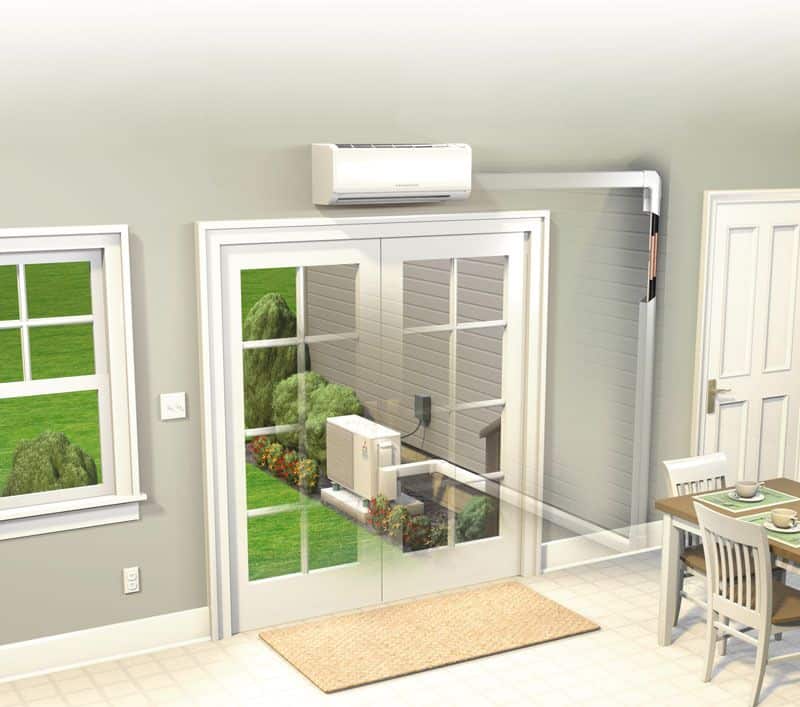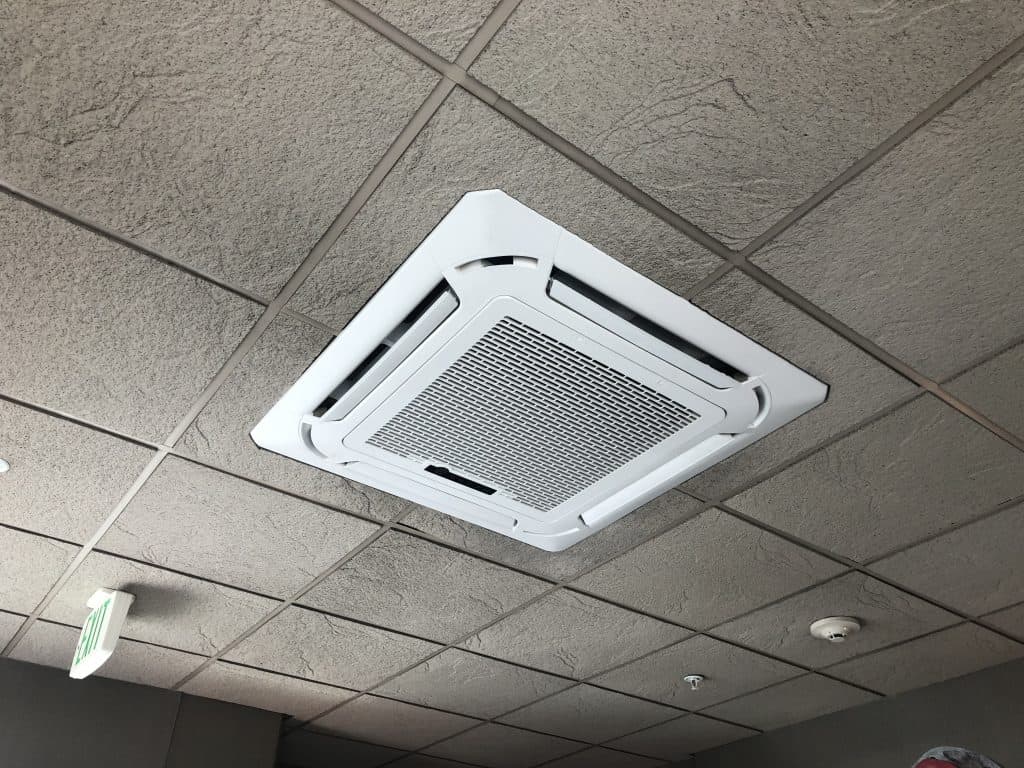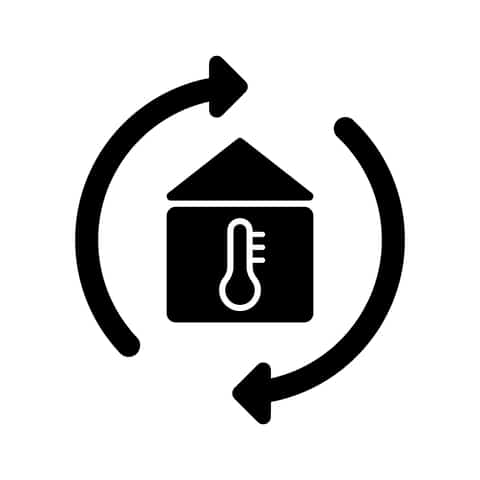The best air conditioning for a condo or apartment near Boise, ID is a ductless mini split system, and we are the Treasure Valley’s leading Mitsubishi Electric Elite Diamond contractor.
A condo complex in Boise, ID, was ready for a cooling upgrade. The problem was a common area in the building. Over the past few summers, it was getting hotter and hotter. This year, as temperatures rose again, it was becoming unbearable.
Problem: The common area in a condo complex was always too hot. The unit had an older dauntless system that wasn’t right for the job anymore.
Solution: Installed a new Mitsubishi Electric heat pump and ceiling cassette. This new setup is strong enough to treat the entire area with one indoor component and is barely noticeable.
Read More: How Much Does A Mini Split Cost In And Around Boise Metro?
The property manager gave us a call at Snowflake Air, knowing we’re a big proponent of ductless mini splits in the Boise area. When we arrived, we realized the problem was pretty simple: Their old system was on its last legs!
We’d need to install a completely new system. The good news was that the mini-splits on the market today work even better than 15 or 20 years ago when it looks like this one was installed.
And, we recommended a slightly different setup that would give them better results.
In this case study, we’ll review:
- How ductless heating and cooling works
- Ceiling Cassette Vs. Wall-mounted Air Handlers
- Benefits of a New Ductless Mini Split

Ductless Heating and Cooling in a Condo Complex
As the name suggests, ductless heating and cooling doesn’t require ductwork. That means no bulky soffits changing the look and feel of a room, and no figuring out how to run a whole lot of ductwork across a commercial building.
Instead, all we need is a small lineset with flexible piping to connect the indoor and outdoor units. Here’s how it works:
Inside, there’s an air handler that draws hot air from the room, dehumidifies it, and circulates cooled air. It’s connected to an outdoor heat pump using a lineset with narrow, flexible piping inside it.
Inside that piping is a refrigerant liquid running in a closed loop between the two units. Hot air enters, and the heat causes the coolant to evaporate.

When that gas reaches the heat pump, that unit expels the heat outside. The refrigerant condenses and travels back to the air handler, which then provides cooling to the room.
Now, the piping is only an inch or two thick, and it’s not rigid. So, we just run it through the walls like electrical wiring. We can place it almost anywhere, so installation is easy and doesn’t include the extra costs of designing, fabricating, and installing ductwork.
Let’s see how that played out in this condo complex.
Ceiling Cassette Vs. Wall-mounted Air Handlers
The one significant change we recommended was using a ceiling cassette air handler instead of the more common wall-mounted models. Both do the same basic job: dehumidifying the warm air and circulating cool air back into the room.
But, some differences made the ceiling model a better choice here.
Wall-mounted is great in homes and even smaller commercial spaces. We often mount them up near the ceiling or in the corner of the room. They use specialized fans, so you don’t necessarily need to place them in a central location to treat the entire area.
But, ceiling cassettes are much more powerful. In a small room, they’re overkill. But, this was a large, open space in a common area.
So, it was worth putting in something a little stronger. And, there was more headroom between the rafters above the ceiling. That made it easy to install.

Next, it doesn’t take up nearly as much room as a wall-mounted unit. In a space like this, it’s more aesthetically pleasing.
Most of the unit is recessed above the ceiling, so all you see is a vent.
In fact, it looks like the kind of vents you’ve probably seen in plenty of buildings over the years. You know, the kind that’s in the ceiling, and maybe there’s a strip of tape or paper so you can see when air is flowing through it.
While they look the same, however, ductless offers many advantages that conventional central air does not.
Benefits of a New Ductless Mini Split
Compared to central air, a new ductless mini-split:
- Costs Less to Run
- Cools a Large Area Better
- Is Much, Much Quieter
Of course, this condo had an old mini split for this area. The new Mitsubishi model we installed includes all these benefits, but it costs even less to run and does a better job than the old one.
Chalk that up to the technology getting better and better over the years. But, let’s see how these do it all:
Costs Less to Run
We briefly went over how the mini split works. This heat transfer process requires much less energy than traditional AC.
Instead of pushing forced air over a condenser, all the heat pump needs are a tiny bit of electricity circulating the refrigerant. The transfer process happens almost automatically once the evaporated coolant reaches the outdoor unit.
It also uses inverter technology to run in low-speed modes. This way, it doesn’t have to come on at full blast all the time. Instead, it often runs on low power, maintaining the temperature while using less energy.
As a result, properties using mini splits for cooling — and even heating with the right models — have significantly lower energy bills.
Cools a Large Area Better
Whether you’re using wall-mounted or recessed ceiling cassette, you’re still getting better coverage than forced air.
The indoor ductless units use sensors that detect hot and cold spots in the space they’re treating.
Ductless mini-splits also have specialized fans that can direct the conditioned air to the areas of the room where it is needed most.

As a result, you get the effect you want faster, which means the system costs even less when it doesn’t have to run as much.
This is a huge benefit when you want cooling you don’t have to shout over. Since there’s no forced air, there’s almost no sound whatsoever.
For comparison: At its loudest, an air handler such as this makes as much noise as leaves rustling outside.
Read More: Rebates and Financing For Mini Splits In And Around Boise Metro
Ductless Mini Split Installations In Boise, ID
If you’re interested in a ductless mini-split for your apartment building, condo, or other commercial space, call or email us at Snowflake Air. Starting with a free consultation, we’ll help you determine if it’s a good fit, and what that best model would be for your space.





Trackbacks/Pingbacks